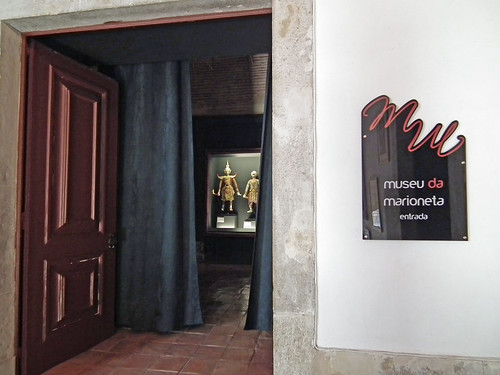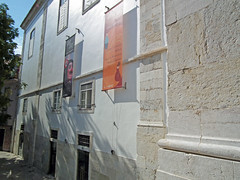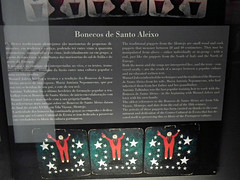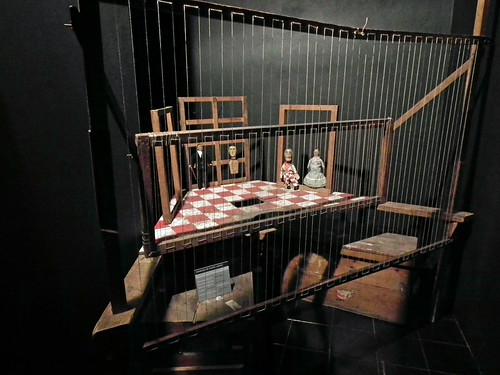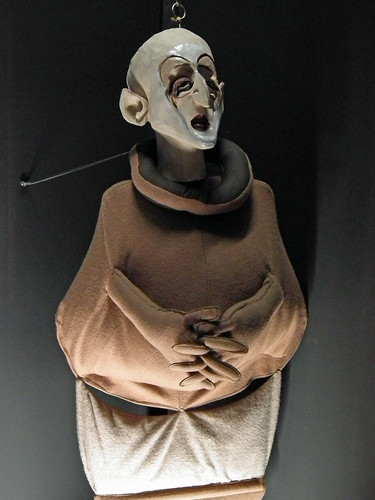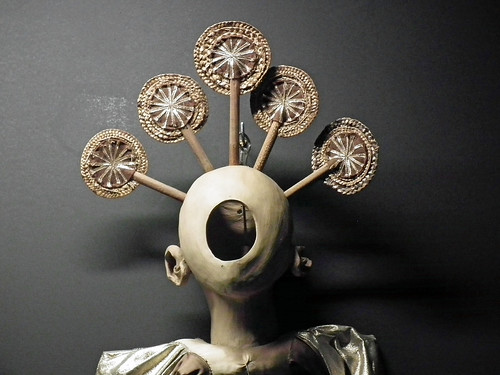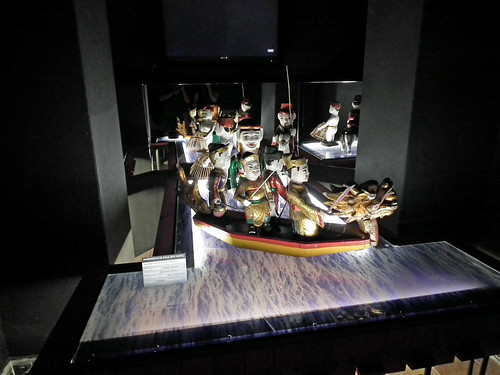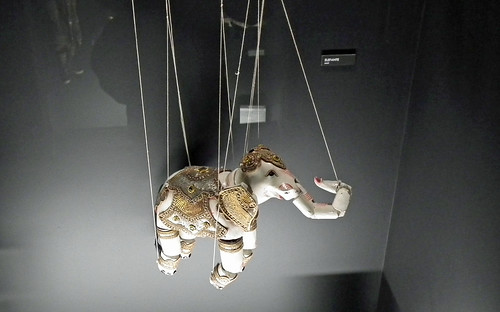I know, I did travel to Lisbon at the end of September 2011, but as with many other experiences in my travels I could not share it when this happened. To every thing its time comes.
That visit to Portugal was a total delight, and although I did not see a single play or dance performance (I remind you that I actually went to a party to Andalusia, where I would give my first presentation of Butoh to a live audience), there were some "performance" experience worth sharing. One of these experiences has already appeared in this Blog: Hieronymus Bosch painting "The Temptation of St. Anthony", a masterpiece at the National Art Museum in Lisbon. Today I offer you a second one I consider interesting to share: the pictures I took inside the Puppet Museum in Lisbon (Museu da Marioneta).
Lisbon is a city of lovely and very old neighborhoods, we can walk among streets with Roman ruins, Islamic period buildings, medieval churches or, especially, Portuguese imperial era squares and palaces, take a charming tram or even a street elevator to a "miradour". Yes, walking is the best way to know and enjoy the city. So in one moment you get to discover the beautiful facade of the former Convent das Bernardas, a seventeenth century building (today completely remodeled) that now houses the Museo da Marioneta (The Puppet Museum).
Of course, inside the tourist guide a museum dedicated to puppets does not have a big role but even though I wanted to visit it; I had the wrong idea (read somewhere before my arrival) that Asian puppet tradition entered though Portugal and its influence caused the development of puppet theater in Europe, so I wanted to see those objects-documents (the puppets) who testified that idea. As I said before it was not an entirely correct information: yes, there is a whole ancient tradition of puppet theater in Portugal but there is no great evidence of ancient Asian influence in it; the Portuguese Puppet tradition comes originally from the southern province of Alentejo, with the puppets of Santo Aleixo, which were very famous in the late eighteenth century, currently enjoying a renaissance in the same Portuguese province with performances, festivals and exhibitions of ancient collections.
My visit to this museum in Lisbon could not be what I was expecting at first but it paid off, I enjoyed the big collection of puppets from around the world on display, as well as the curious creations of several Portuguese Puppet theatre companies of the twentieth century, especially by the promoter for the realization of this museum, the puppet company of S. Lourenço.
As I'm used to do, I'll show you the more interesting pictures (in my point of view, of course) but you have in the end a slideshow with all of them; in the same way you can visit flickr.com and open the album (following the link from each photo) and see them with more calm on that site.
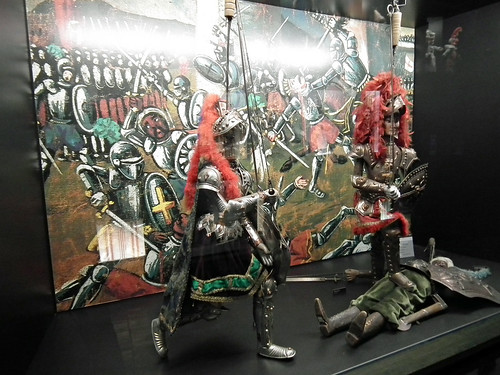 |
| Portuguese puppets from beginning of twenty century. Puppet Museum in Lisbon (By Gustavo Thomas. 2011) |
Texts, photographs and videos in this Blog are all author's property, except when marked. All rights reserved by Gustavo Thomas. If you have any interest in using any text, photograph or video from this Blog, for commercial use or not, please contact Gustavo Thomas at gustavothomastheatre@gmail.com.
